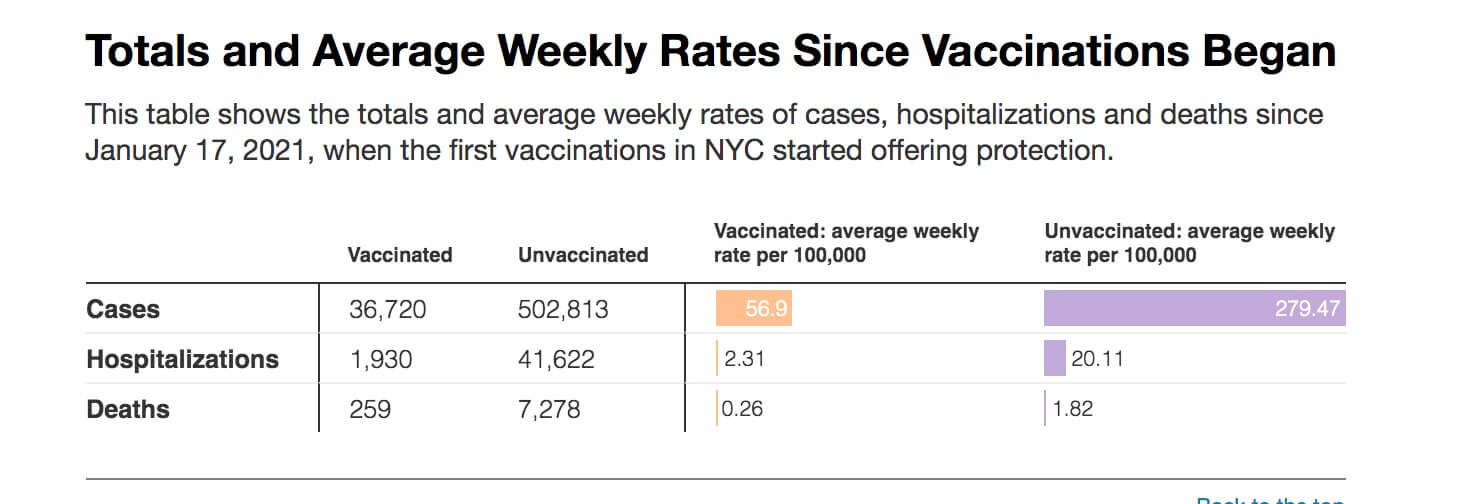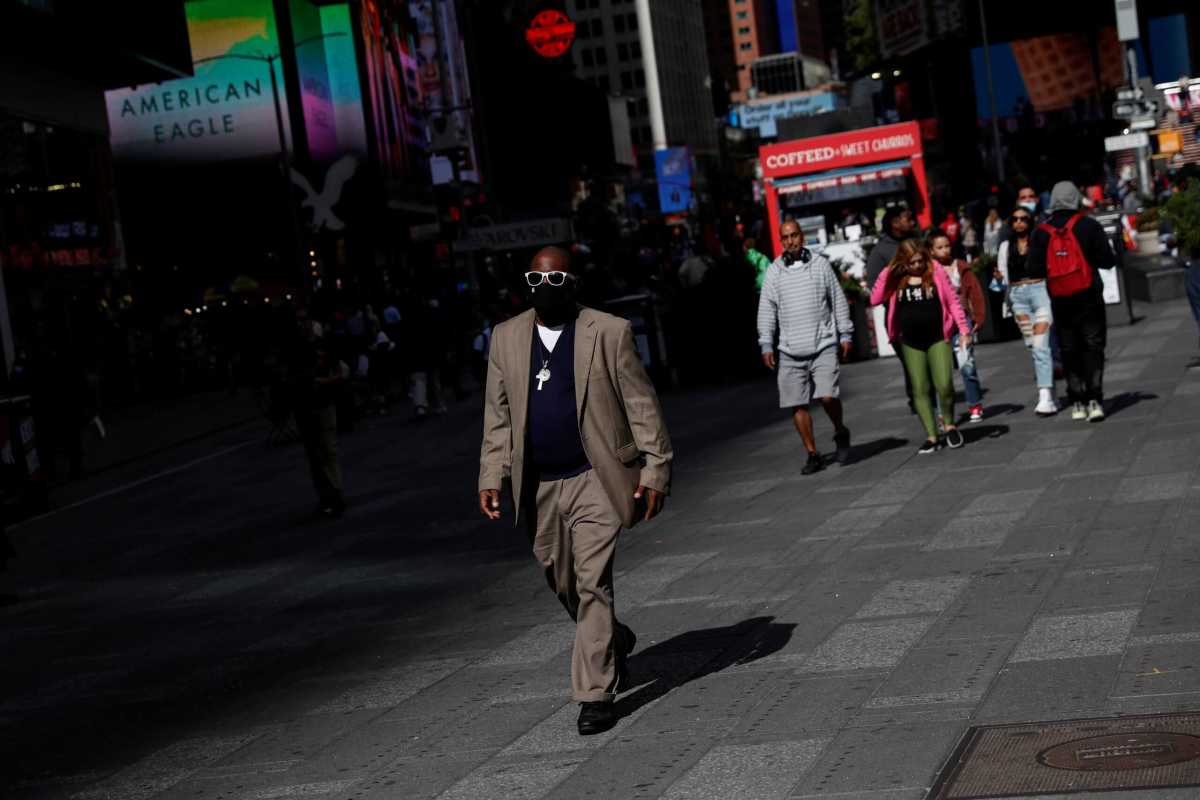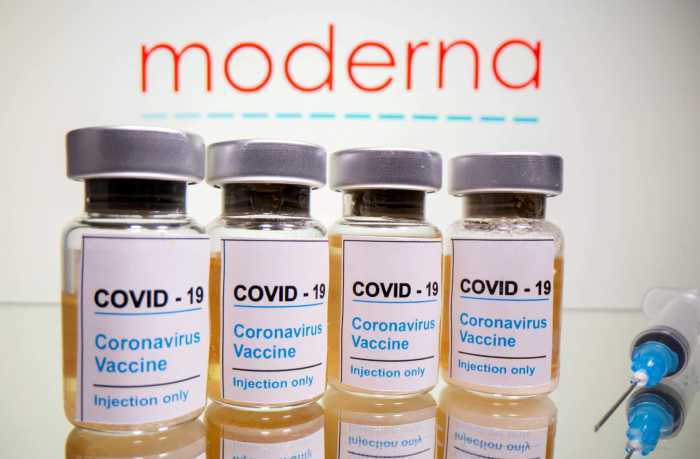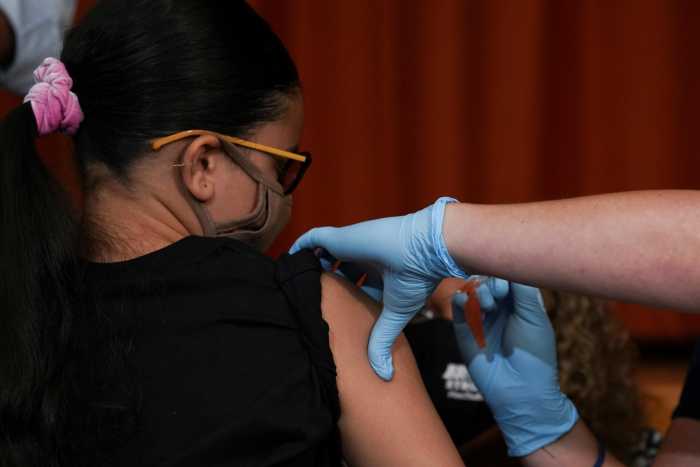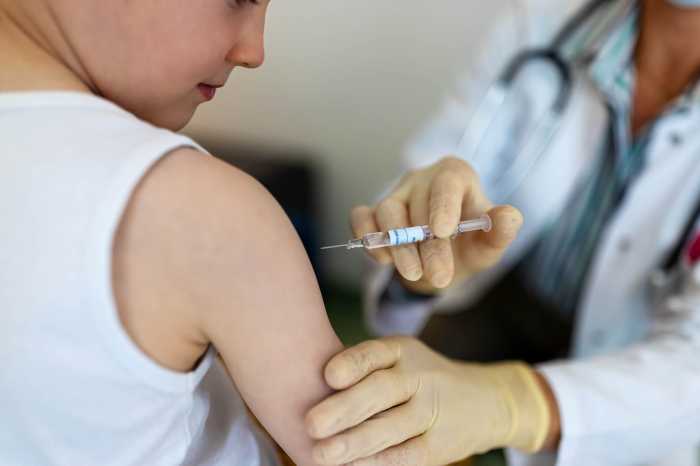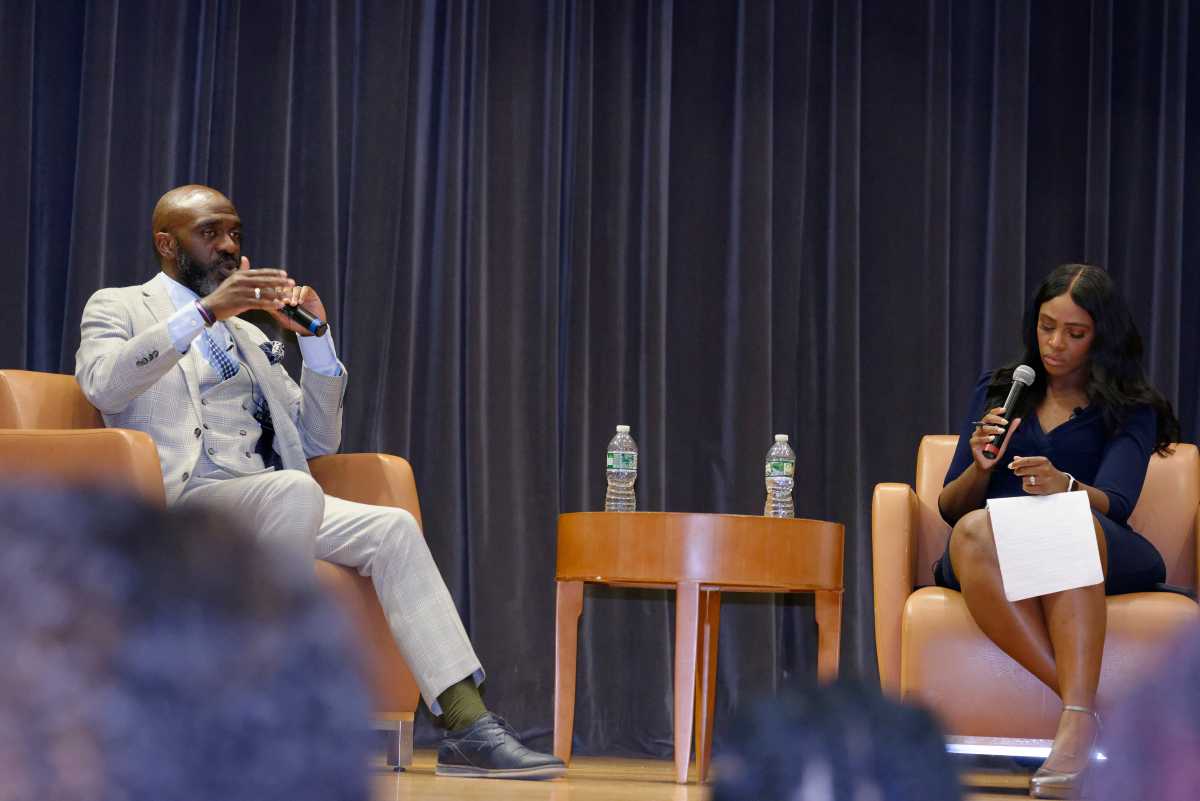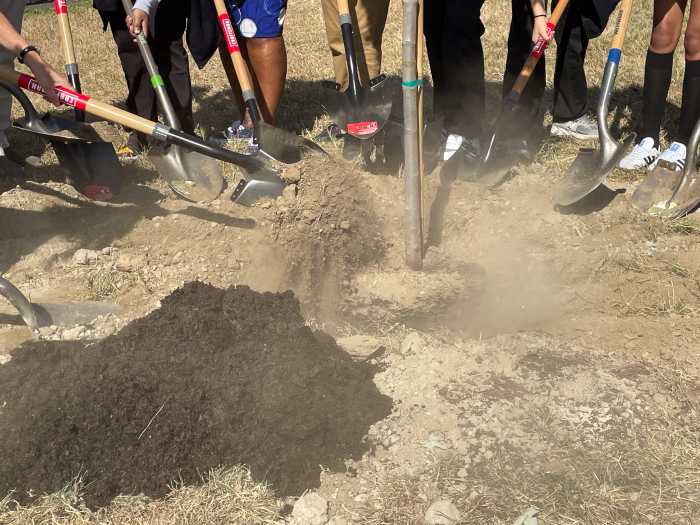Defying the continued reopening of New York City, the spread of COVID-19 continues to fall across the Five Boroughs — but not in areas where vaccination rates have lagged behind the citywide average.
The latest New York City Health Department data shows that the virus is thriving in the 10 communities with the lowest overall fully vaccinated rates — but well-contained in the 10 areas where at least 89% of residents rolled up their sleeves and got both doses of the vaccine.
Nine of the 10 communities with the lowest vaccination rates had 50 or new COVID-19 diagnoses reported between Sept. 22-28. Seven of the areas also had 7-day positivity rates above 3% — much higher than the citywide positivity rate of 2.19% recorded on Sept. 28.
For months, Edgemere/Far Rockaway, Queens (11697) has trailed the entire city in the vaccination effort; as of 9:30 a.m. Oct. 3, the community recorded just 42% of its residents as being fully vaccinated and 49% of all residents having received at least one dose.
To put things in perspective, the COVID-19 vaccine has been available to all New York City residents, ages 12 and up, since late May of this year.
But during the week of Sept. 22-28, Edgemere/Far Rockaway saw 92 new COVID-19 diagnoses and a 7-day positivity rate of 4.55% — the third-highest average in the entire city.
Vaccinations have also lagged behind in the Brooklyn community of Borough Park, where the virus’ spread is now amping up.
Borough Park (11219), which recorded just 42% of residents fully vaccinated and 47% of them with at least one dose, had the second-highest new COVID-19 diagnoses in the entire city the week of Sept. 22-28 with 140. It also had a 7-day positivity rate of 6.57%, which was also the second-highest across the Five Boroughs.
Another low-vaxxed Brooklyn neighborhood, Midwood (11230), saw 103 new COVID-19 cases the week of Sept. 22-28 and a 7-day positivity rate of 3.75%. Just 46% of Midwood’s residents are fully vaccinated, and 52% of all of its inhabitants bothered to get at least one dose.
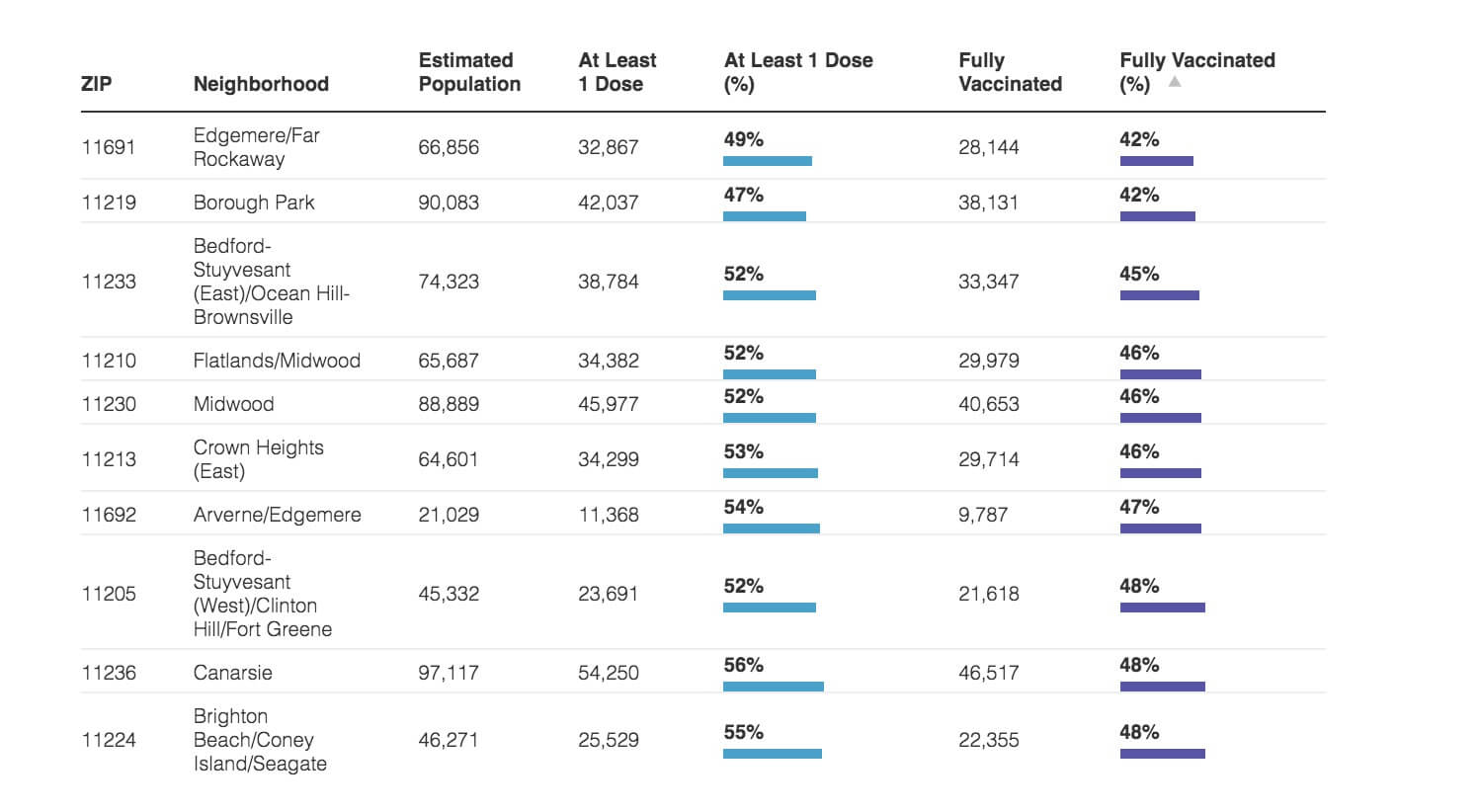
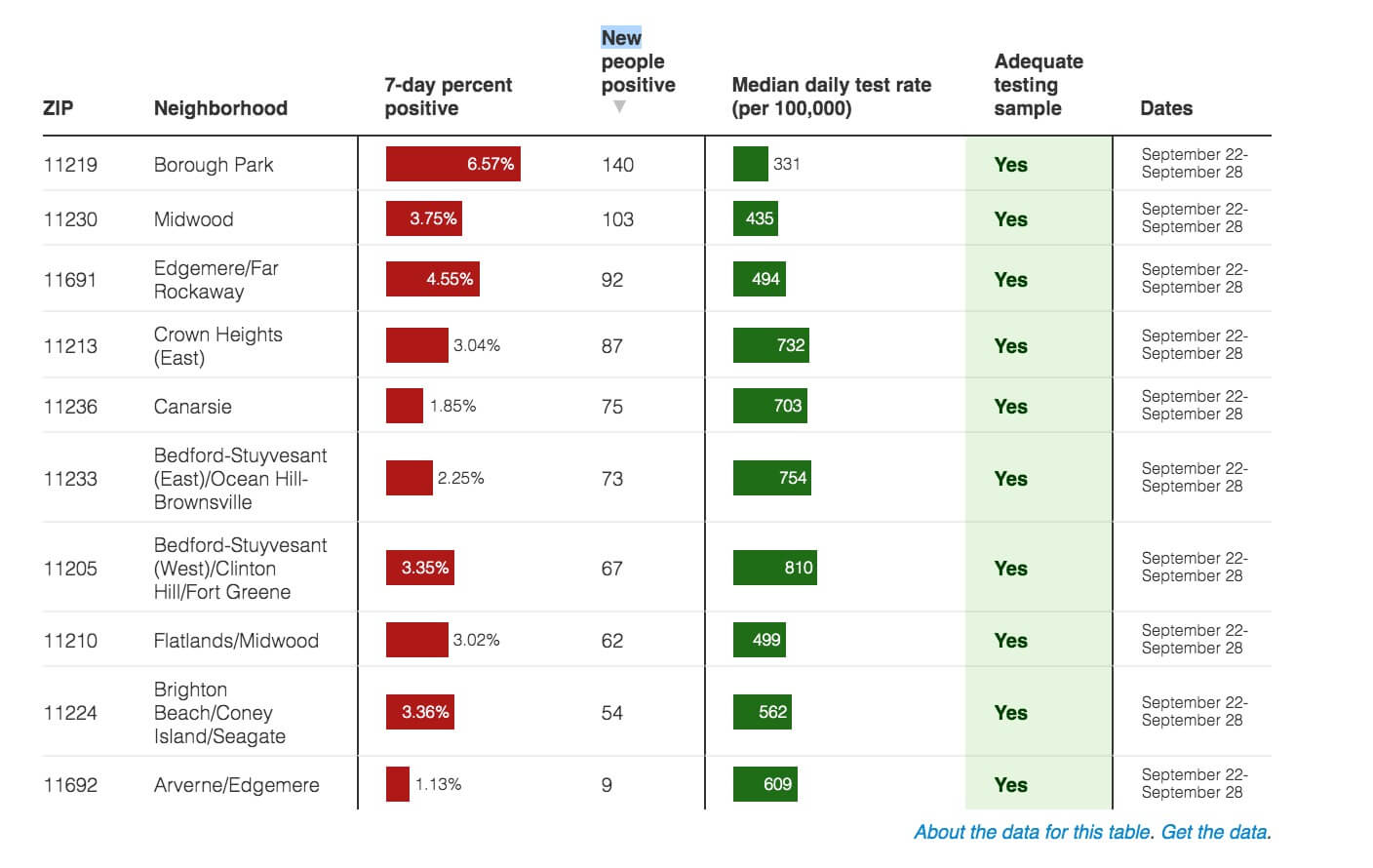
Meanwhile, the 10 areas of New York City with the highest fully vaccinated rates continue to see some new COVID-19 cases — but not nearly in the same volume as in low-vaxxed areas.
The Health Department data found that all 10 of the high-vaxxed communities had positivity rates under 3%, and just two neighborhoods saw 50 or more cases between Sept. 22-28.
The Queens neighborhoods of Flushing/Murray Hill/Queensboro Hill (11355) had the highest number of new cases on the top 10 vaccination list with just 53, and a 7-day positivity rate of 2.83%; it was the only community on the list with a positivity rate above 2%. The Health Department reported that 99% of all residents are fully vaccinated; it would seem that many of the positive diagnoses are breakthrough cases, which are not uncommon.
Elmhurst, Queens (11373) — once the deadly epicenter of the COVID-19 outbreak in March/April 2020 — saw 51 new COVID-19 cases between Sept. 22-28 and a 7-day positivity rate of 1.91%. The Health Department reported 92% of all Elmhurst residents as being fully vaccinated, and 99% having received at least one dose.
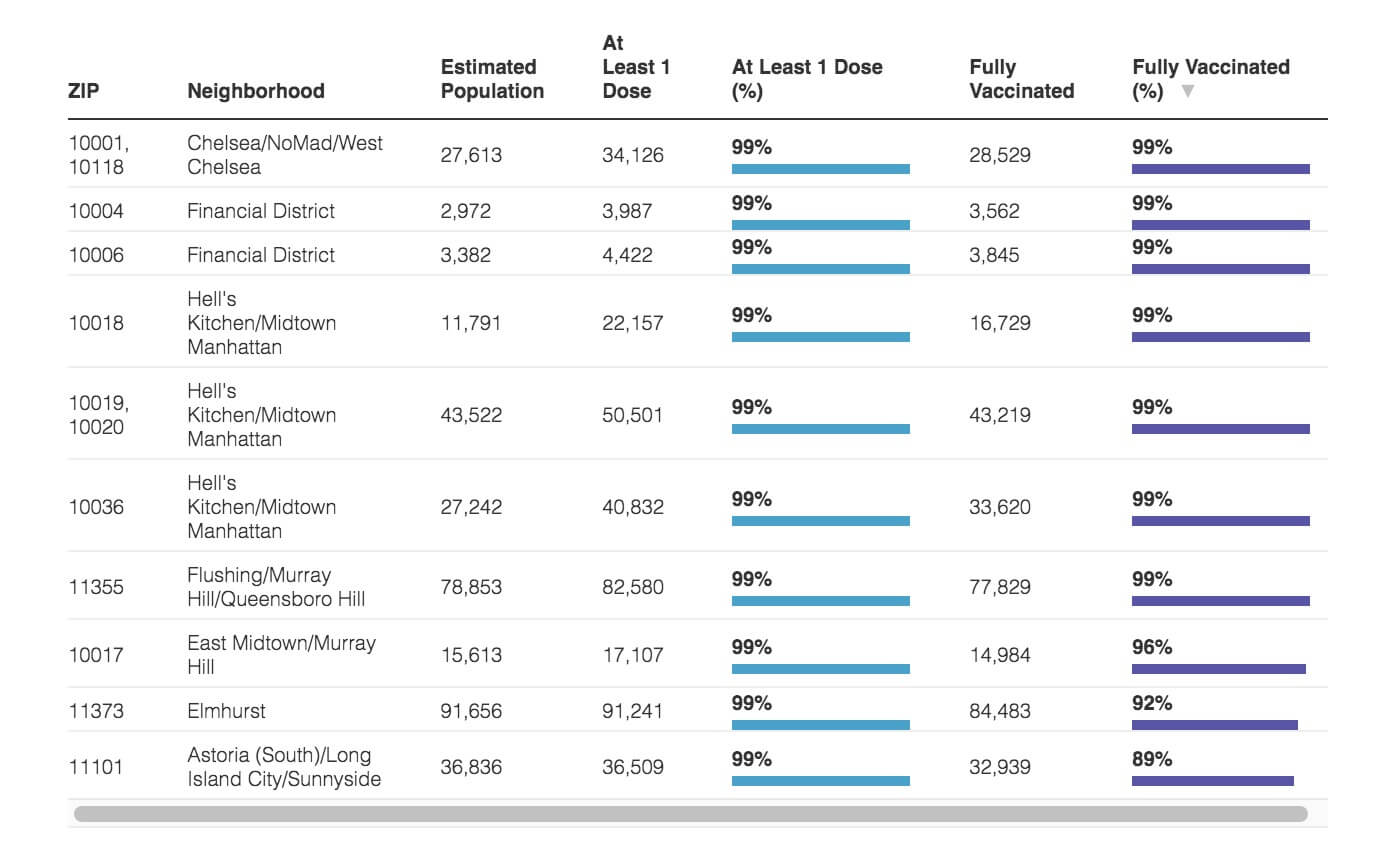
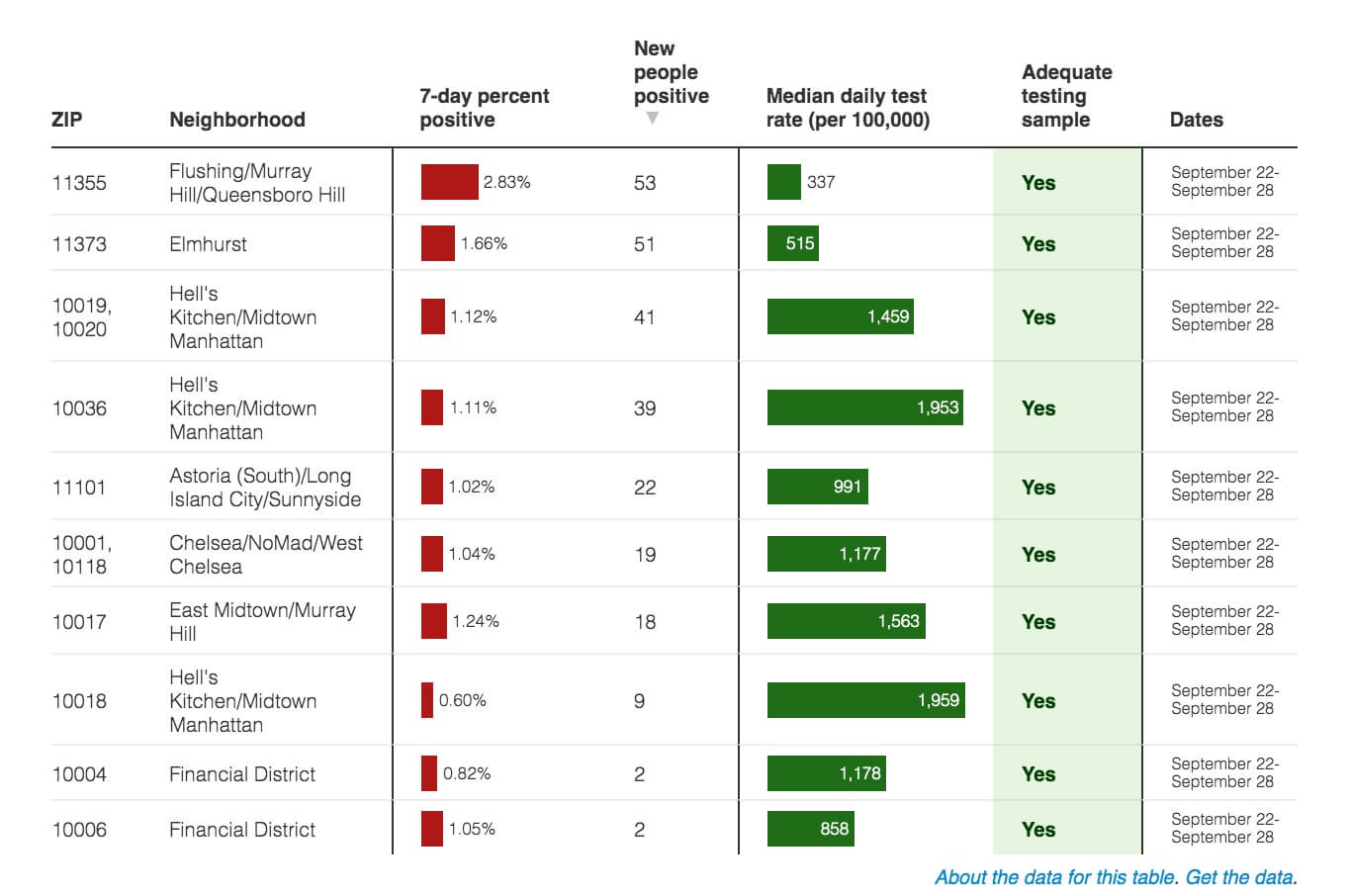
COVID-19 makes itself at home in Brooklyn
Of the 69 communities of New York City with fully vaccinated rates under 60% as of Oct. 3, the Health Department reported that 28 of them (41% of the entire list) saw 50 or more new COVID-19 cases between Sept. 22-28.
All but six of these communities are in Brooklyn, which trails the entire city in overall vaccinations. The 22 Brooklyn areas saw a total of 1,130 new diagnoses the week of Sept. 22-28. The borough of Kings has 57% of all residents (1,451,444) fully vaccinated and just 63% of residents having received at least one dose.
The 28 low-vaxxed NYC neighborhoods with 50 or more new COVID-19 cases are as follows, as broken down by borough:
• Bronx — Belmont/Fordham University/Kingsbridge (10458, 56 new cases); Concourse/Highbridge (10452, 57 new cases).
• Brooklyn — Gravesend/Homecrest (11223, 102 new cases); East Williamsburg/Williamsburg (11211, 156 new cases); Bergen Beach/Flatlands/Mill Basin (11234, 87 new cases); Canarsie (11236, 75 new cases); Gerritsen Beach/Homecrest/Sheepshead Bay (11229, 84 new cases); Cypress Hills/East New York (11207, 99 new cases); Bensonhurst/Mapleton (11204, 78 new cases); Ocean Hill/Brownsville (11212, 88 new cases); Cypress Hills/East New York (11208, 81 new cases); Brighton Beach/Manhattan Beach/Sheepshead Bay (11235, 72 new cases); Kensington/Windsor Terrace (11218, 58 new cases); Flatbush/Prospect Lefferts Gardens (11226, 66 new cases); Bedford-Stuyvesant/Bushwick (11221, 84 new cases).
• Queens — Ridgewood/Glendale (11385, 71 new cases).
• Staten Island — Charleston/Prince’s Bay/Woodrow (10309, 61 new cases); Annadale/Rossville (10312, 83 new cases); Bloomfield/Fresh Kills Park (10314, 104 new cases).
As the struggle to shatter vaccine hesitancy in parts of New York City continues, COVID-19 continues to spread at a high rate among those it infects. The NYC Health Department reported a transmission rate of 115.16 cases per 100,000 residents. Staten Island and Brooklyn had the highest transmission rates at 159.62 per 100,000 and 131.61 per 100,000, respectively.
Vaccinations are making the difference in terms of severity of COVID-19 infections as well. Since Jan. 17, the infection rate for unvaccinated COVID-19 patients is 279.47 per 100,000 residents, while the rate for vaccinated patients is just 56.9 per 100,000 residents.
Hospitalizations rates are also much higher for unvaccinated individuals (20.11 per 100,000 COVID-19 patients) than vaccinated individuals with breakthrough cases (2.31 per 100,000). Death rates for unvaccinated individuals are also starkly higher.
